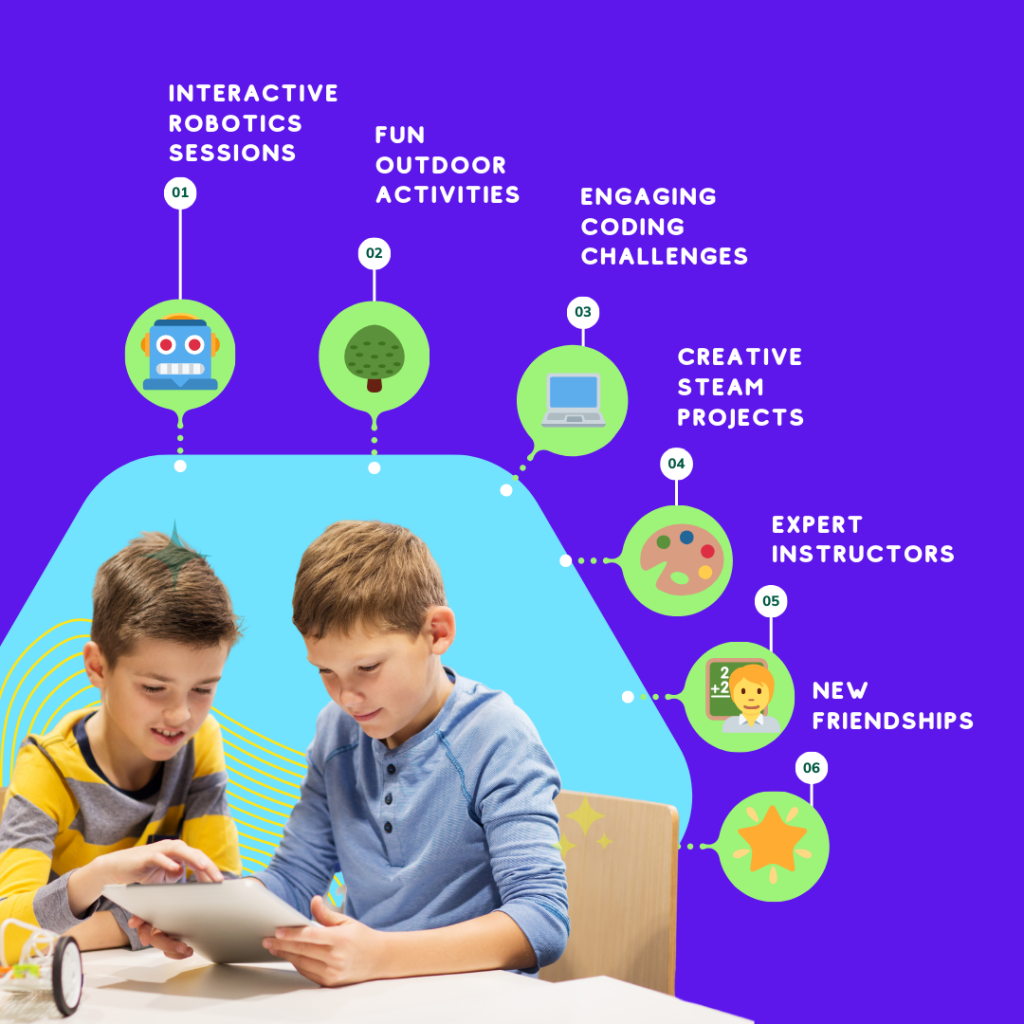In today’s fast-paced, technology-driven world, providing children with a strong foundation in STEAM (Science, Technology, Engineering, Arts, and Mathematics) is more important than ever. One of the best ways to immerse kids in these critical subjects is through STEAM camps. Here are the top five benefits of enrolling your child in a STEAM camp:

1. Hands-On Learning
STEAM camps emphasize hands-on learning, allowing kids to engage directly with materials and concepts. This experiential approach helps solidify understanding and retention of complex ideas. Whether they’re building a robot, designing a video game, or creating a piece of art, the tactile experience of working on projects enhances their learning and makes it fun and memorable.
2. Encourages Critical Thinking and Problem-Solving
At STEAM camps, children are encouraged to think critically and solve problems creatively. They tackle real-world challenges and work on projects that require them to hypothesize, experiment, and iterate. This problem-solving mindset is essential for their academic success and future careers, especially in fields that require innovative thinking.
3. Fosters Collaboration and Teamwork
STEAM projects often involve group work, teaching kids how to collaborate effectively with their peers. They learn to share ideas, give and receive feedback, and work together to achieve a common goal. These teamwork skills are invaluable, not just in educational settings but in everyday life and future professional environments.
4. Boosts Confidence and Independence
Participating in STEAM camps helps boost children’s confidence as they take on new challenges and see their projects come to life. Completing a complex task or solving a difficult problem gives them a sense of accomplishment and reinforces the belief that they can achieve their goals. Additionally, these camps encourage independence by allowing kids to make decisions and take responsibility for their learning.
5. Sparks Interest in STEAM Fields
One of the most significant benefits of STEAM camps is that they can ignite a passion for science, technology, engineering, arts, and mathematics. Early exposure to these fields can inspire children to pursue further education and careers in STEAM, which are areas with growing opportunities and demand. By making learning exciting and relevant, STEAM camps help kids see the potential for a future in these dynamic and rewarding fields.
Benefits of STEAM Camps: Conclusion
The benefits of STEAM Camps are infinite. Enrolling your child in a STEAM camp can be a transformative experience. It’s an opportunity for them to dive deep into engaging subjects, develop essential skills, and discover their interests and passions. At CodeREV Kids, our STEAM camps are designed to provide an enriching and enjoyable learning environment that prepares children for success in school and beyond.
Ready to give your child a summer full of discovery and growth? Sign Up for Our STEAM Camps today and unlock their potential!








